
Straightįive cards of mixed suits in sequence - for example Q- J- 10- 9- 8. If all five cards are equal, the flushes are equal. For example K- J- 9- 3- 2 beats K- J- 7- 6- 5 because the nine beats the seven. If the highest cards are equal then the second highest card is compared if those are equal too, then the third highest card, and so on. When comparing two flushes, the highest card determines which is higher. If the threes of a kind are equal, the rank of the pairs decides.įive cards of the same suit.
#HIGHEST CARD IN SPADES FULL#
When comparing full houses, the rank of the three cards determines which is higher. This combination, sometimes known as a boat, consists of three cards of one rank and two cards of another rank - for example three sevens and two tens (colloquially known as "sevens full of tens" or "sevens on tens"). If one player holds A- 2 and another holds A- K they also split the pot because both have an ace kicker. If one player holds 8-2 and another holds 6-5 they split the pot, since the 9 kicker makes the best hand for both of them. For example in Texas Hold'em with J- J- J- J- 9 on the table (available to all players), a player holding K-7 beats a player holding Q-10 since the king beats the queen. If two or more players have four of a kind of the same rank, the rank of the kicker decides. Between two fours of a kind, the one with the higher set of four cards is higher - so 3-3-3-3-A is beaten by 4-4-4-4-2. This combination is sometimes known as " quads", and in some parts of Europe it is called a " poker", though this term for it is unknown in English. The fifth card, known as the kicker, can be anything. The cards in a straight flush cannot "turn the corner": 4- 3- 2- A- K is not valid.įour cards of the same rank - such as four queens. The highest type of straight flush, A-K-Q-J-10 of a suit, is known as a Royal Flush. An ace can be counted as low, so 5- 4- 3- 2- A is a straight flush, but its top card is the five, not the ace, so it is the lowest type of straight flush. Between two straight flushes, the one containing the higher top card is higher. If there are no wild cards, this is the highest type of poker hand: five cards of the same suit in sequence - such as J- 10- 9- 8- 7. This obviously cannot arise in basic draw poker, but such comparisons are needed in poker games using shared (community) cards, such as Texas Hold'em, in poker games with wild cards, and in other card games using poker combinations. Some readers may wonder why one would ever need to compare (say) two threes of a kind of equal rank. Poker ranks are always based on five cards only, and if these cards are equal the hands are equal, irrespective of the ranks of any unused cards. In games where a player has more than five cards and selects five to form a poker hand, the remaining cards do not play any part in the ranking. Between hands in the same category the rank of the individual cards decides which is better, as described in more detail below. Any hand in a higher category beats any hand in a lower category (so for example any three of a kind beats any two pairs). The categories of hand, from highest to lowest, are listed below. See ranking of suits for details.)Ī poker hand consists of five cards.

(Note however that suit ranking is sometimes used for other purposes such as allocating seats, deciding who bets first, and allocating the odd chip when splitting a pot that can't be equally divided.

In standard poker - that is to say in the formal casino and tournament game played internationally and the home game as normally played in North America - there is no ranking between the suits for the purpose of comparing hands - so for example the king of hearts and the king of spades are equal. There are 52 cards in the pack, and the ranking of the individual cards, from high to low, is ace, king, queen, jack, 10, 9, 8, 7, 6, 5, 4, 3, 2. Hand probabilities and multiple decks - probability tables.


 0 kommentar(er)
0 kommentar(er)
